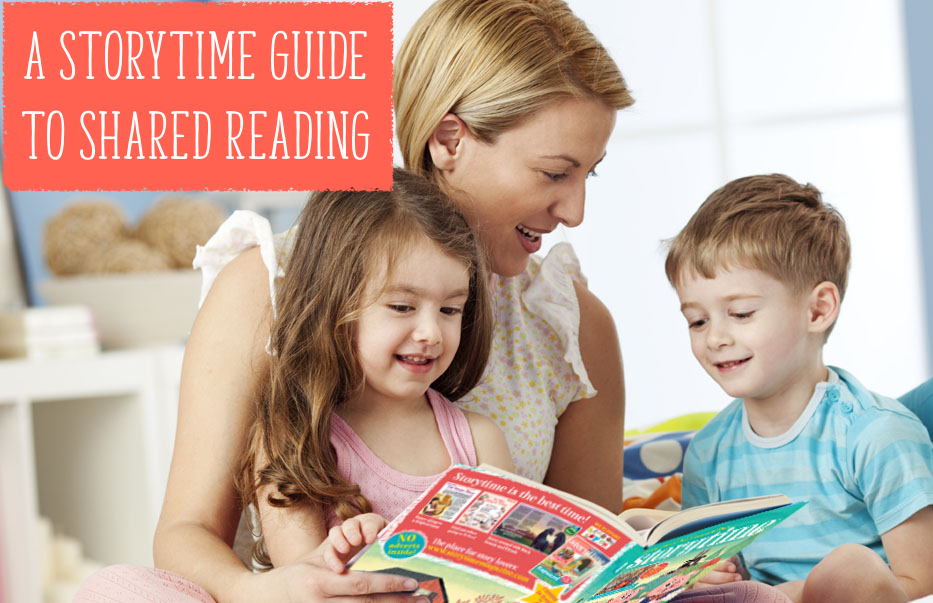 May is National Share a Story Month, an annual event organised by the good people at the Federation of Children’s Book Groups (FCBG). Of course, at Storytime, it’s always share a story month – it’s one of the reasons we make our magazine. We hope that parents will share our stories with younger children and, as they blossom into brilliant readers, children will then share the same stories with their parents.
May is National Share a Story Month, an annual event organised by the good people at the Federation of Children’s Book Groups (FCBG). Of course, at Storytime, it’s always share a story month – it’s one of the reasons we make our magazine. We hope that parents will share our stories with younger children and, as they blossom into brilliant readers, children will then share the same stories with their parents.
The emphasis for us is very much on sharing stories. Of course, we want Storytime to help create generations of confident readers, but we also hope that it will leave children with the warm and happy memories that come from reading together.
There are a few ways, as a parent or teacher, you can go about this – you can read aloud to your child, which is the way most of us deliver stories, or you can try your hand at shared reading.
Shared reading is quite different to the silent and solitary experience of reading a book to yourself and it’s not quite the same as the reader/listener experience of reading aloud to your child. You probably already do shared reading quite naturally, but if you’re unsure, here’s our quick guide to what it is and how to do it.
How to do shared reading
- With shared reading, you’re in it together. Rather than just reading aloud, you experience the story together – that means your child needs to be able to see the pages you’re reading.
- As you read to your child, get them involved from the start. Can they guess what the story might be about from the title? Discuss it before you begin. It doesn’t matter if their predictions are incorrect.
- Follow each word of the story with your finger, so your child can associate the sounds they’re hearing with the letters they see – and your expressions with punctuation. They’ll see and hear clearly how you react to a sentence with a question mark or exclamation mark, for example.
- Repetitive stories, like Henny Penny (Storytime Issue 19) or The House That Jack Built rhyme (Storytime Issue 16) are great for shared reading. The predictability of the text makes it easy for kids to join in, so encourage them to read the repetitive bits out loud with you.
- When you find unfamiliar or hard-to-pronounce words, work out how to sound it out together and ask your child to repeat the word after you to help their pronunciation. Talk about what the word might mean in the context of the sentence or even the whole story. This is an effective way to build vocabulary.
- If you discover a complex idea or sentence in the story, stop and ask your child whether they understand. Can they explain what’s happening?
- Point to the illustrations on each new page and ask your child who the characters are and what they’re up to. You can even ask what happens next before turning a page – this helps build up both anticipation and participation.
- Older children or more confident readers might be able to read the whole story along with you. If so, make sure you choose something interesting, challenging and not too long. Put lots of expression into your reading, so they can model what you’re doing.
- When you’ve finished, ask questions about the characters and what happened to them so you can see how well your child has comprehended the story. Were their predictions for the story based on the title correct?
As you can see, shared reading with children is far more involved than reading aloud, and it’s not right for every story session – particularly if you’re winding down at bedtime, but it’s definitely worth exploring as your child can get so much out of it. They’re far more likely to remember the vocabulary in a story they’ve shared with you and have been ‘involved with’ than one they’ve experienced more passively. This deeper engagement in reading is a real boon for literacy and can, in turn, encourage reading for pleasure.
You don’t have to try all of the ideas listed above in every session, just try one and see how it goes. The key is to gauge how open your child is to a shared reading session and not pick a moment when they’re too tired to engage. Shared reading is just story-telling in a more switched-on way. The Bookstart site has some interesting research on it you want to know more.
If you run a children’s book group, incidentally, and aren’t a member of the FCBG, it’s worth joining as they’re a hugely passionate bunch and there’s very little they don’t know about children’s books or running a successful group.
Good luck and let us know how your shared reading goes this week! Keep sharing those stories.
Until next time!




